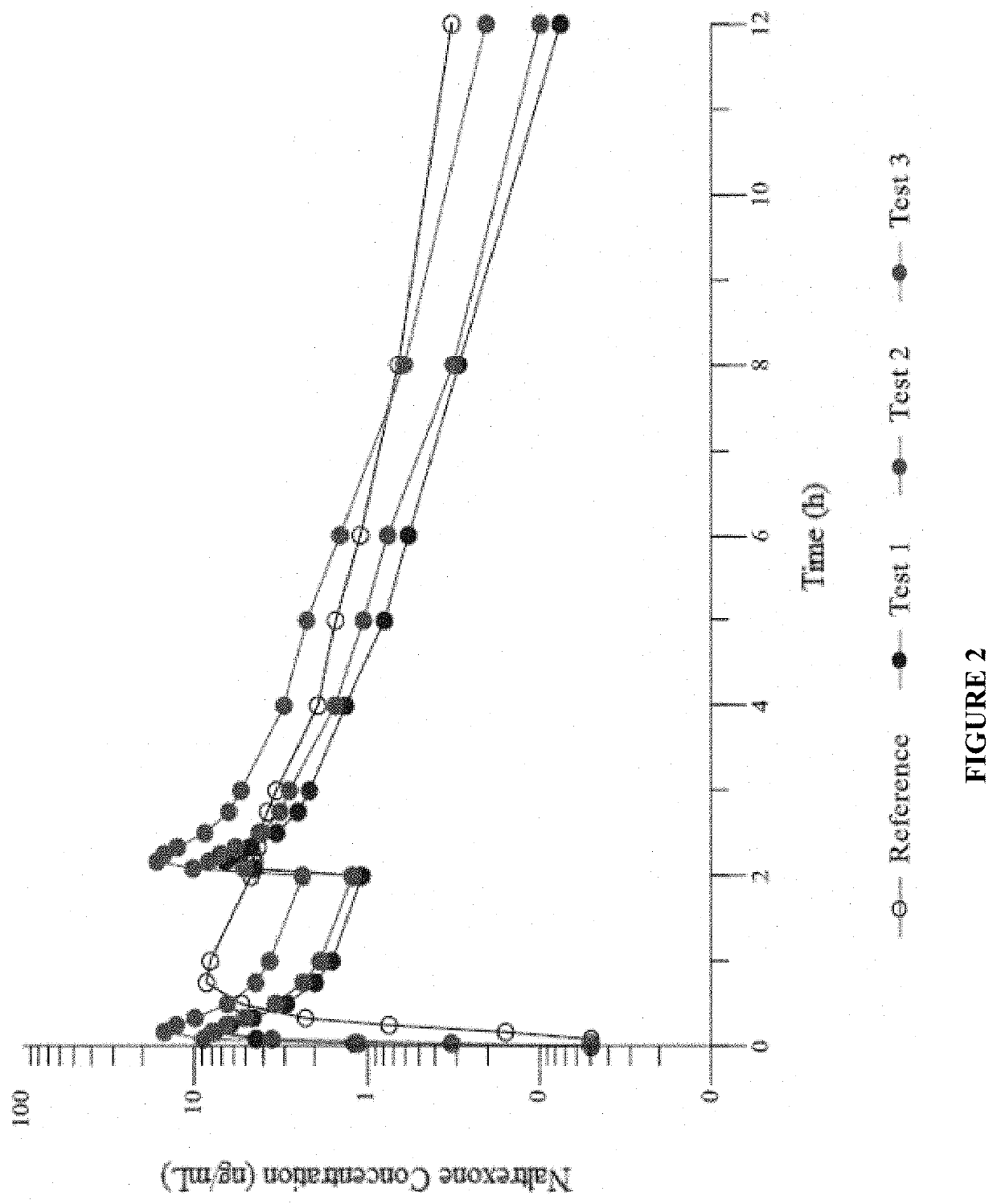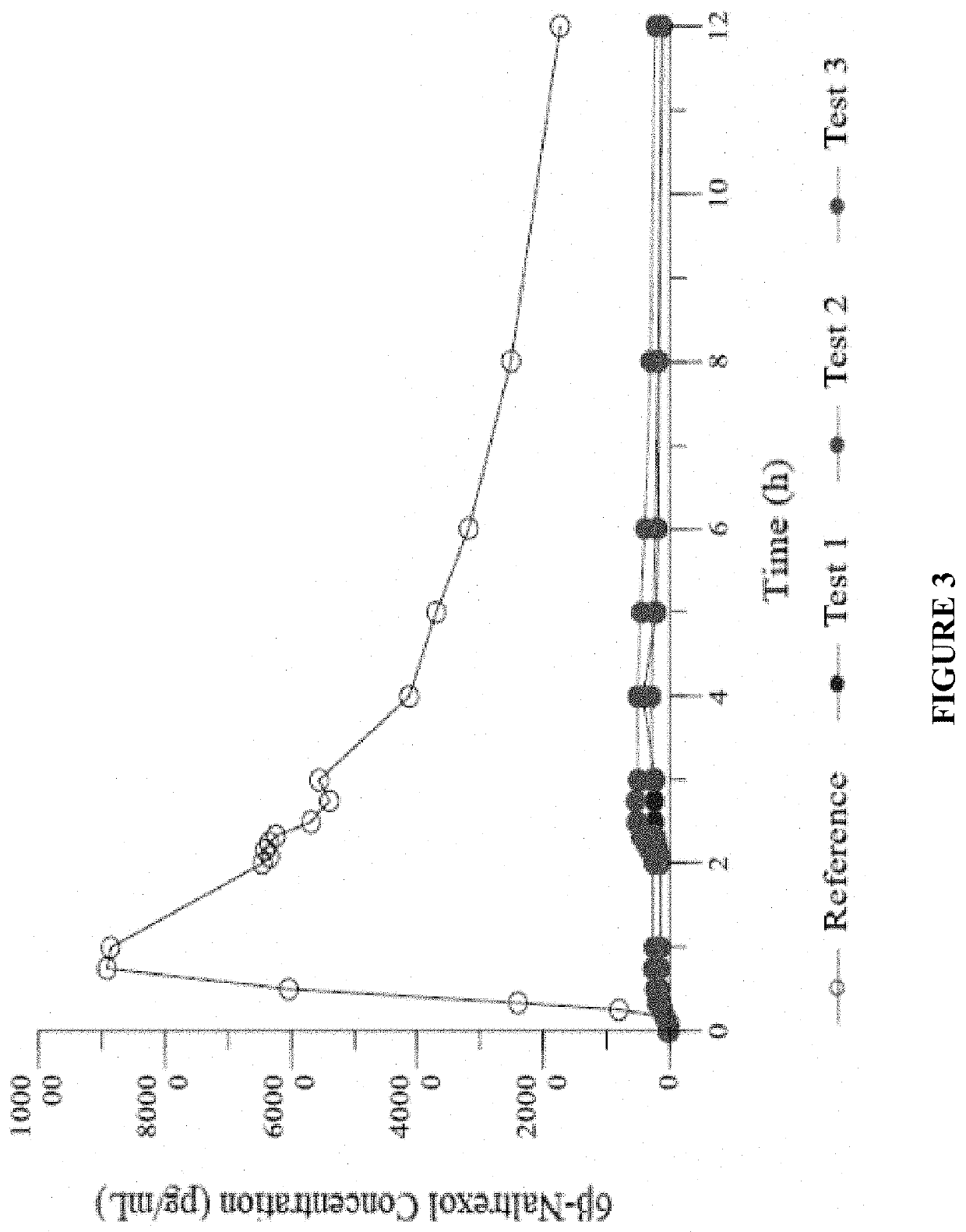Compositions, devices, and methods for the treatment of overdose and reward-based disorders
- Summary
- Abstract
- Description
- Claims
- Application Information
AI Technical Summary
Benefits of technology
Problems solved by technology
Method used
Image
Examples
example 1
l Naltrexone Protocol for the Treatment of Alcohol Use Disorder
[0289]Individuals with alcohol use disorder (AUD) will be treated with intranasal naltrexone and examined for abstinence, reduced consumption of alcohol, and / or extinguished consumption of alcohol. Individuals with AUD are believed to release endogenous opioids upon the ingestion of alcohol. The binding of these opioids to receptors in the brain may be responsible for the positive reinforcing effects of alcohol. Drinking alcohol while the opioid antagonist naltrexone blocks the positive reinforcement from alcohol should extinguish alcohol drinking and craving.
[0290]In one example of a protocol, subjects (e.g., about 10-20) with AUD will make be admitted as in-patients to a study site. An initial visit serves the purpose of screening, to confirm the diagnosis and obtain informed consent. During their in-patient stay (e.g., one or more weeks), each subject will receive a placebo or intranasal dose of naltrexone followed by...
example 2
inetic Data Analysis
[0294]The non-compartmental pharmacokinetic (PK) parameters of naltrexone and 6β-naltrexol (Cmax, Tmax, AUCo-t, AUCo-∞, t1 / 2, λz, and apparent clearance (CL / F, naltrexone only) will be determined. PK parameters of various AUD treatment protocols (e.g., 4 mg intranasal with or without an absorption enhancer such as an alkylsaccharide; 50 mg oral tablet) will be compared with a 2 mg intramuscular (IM) dose of naltrexone. Dose-adjusted values for AUCs and Cmax will be calculated. The relative extent of intranasal (IN) and oral absorption (PO) absorption will be estimated from the dose-corrected AUCs. Within an ANOVA framework, comparisons of IN-transformed PK parameters for IN and PO versus IM naltrexone treatments will be performed. The 90% confidence interval for the ratio (IN / IM and PO / IM) of the geometric least squares means of AUC and Cmax parameters will be constructed for comparison of each treatment with IM naltrexone. These 90% confidence intervals will be ...
example 3
ction and Pharmaceutical Composition with Absorption Enhancers
[0297]Intranasal naltrexone may optionally be formulated with absorption-enhancing excipients.
[0298]One such excipient is the alkylsaccharide Intravail®. Concentrations of Intravail® in nasal formulations have generally been 0.1% and 0.2% by weight. The present study will use a concentration of 0.25% by weight of an alkylsaccharide. Concentrations of 25% Intravail® were non-irritating in the rabbit eye model. The oral “no observable effect level” was approximately 20,000 to 30,000 mg / kg body weight. While there is no comparable intranasal data, the essential lack of oral safety suggests that the amount of an alkylsaccharide needed for nasal toxicity would be much higher than the amount that will be administered in this study.
[0299]In the present study, a single dose of naltrexone was administered 4 ways: a) 4 mg IN in sterile water for injection; b) 4 mg IN in sterile water for injection with 0.25% Intravail®; c) 2 mg as ...
PUM
| Property | Measurement | Unit |
|---|---|---|
| Fraction | aaaaa | aaaaa |
| Fraction | aaaaa | aaaaa |
| Fraction | aaaaa | aaaaa |
Abstract
Description
Claims
Application Information
 Login to View More
Login to View More - R&D
- Intellectual Property
- Life Sciences
- Materials
- Tech Scout
- Unparalleled Data Quality
- Higher Quality Content
- 60% Fewer Hallucinations
Browse by: Latest US Patents, China's latest patents, Technical Efficacy Thesaurus, Application Domain, Technology Topic, Popular Technical Reports.
© 2025 PatSnap. All rights reserved.Legal|Privacy policy|Modern Slavery Act Transparency Statement|Sitemap|About US| Contact US: help@patsnap.com



